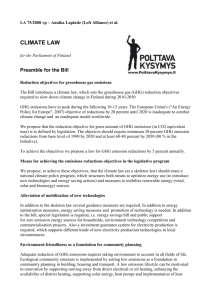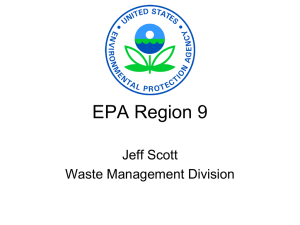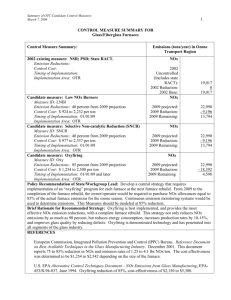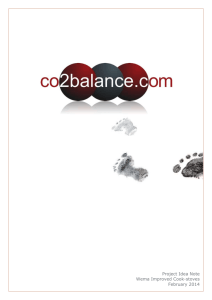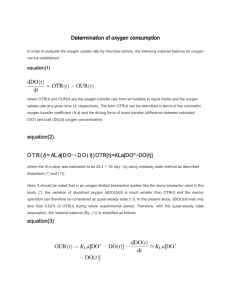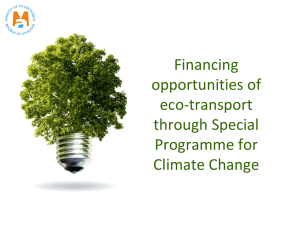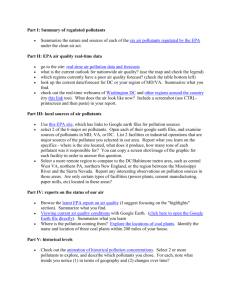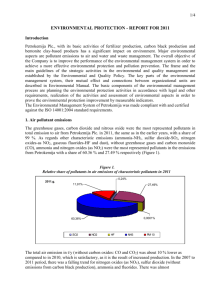OTC Committee Discussion Paper for Potential Measures Date
advertisement
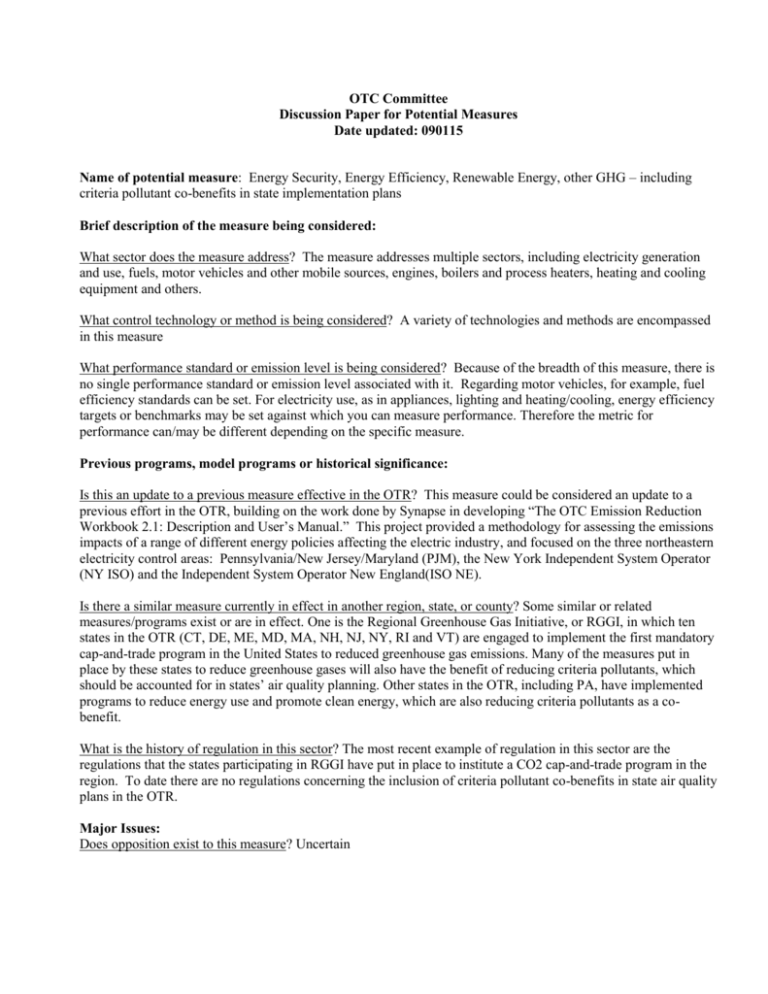
OTC Committee Discussion Paper for Potential Measures Date updated: 090115 Name of potential measure: Energy Security, Energy Efficiency, Renewable Energy, other GHG – including criteria pollutant co-benefits in state implementation plans Brief description of the measure being considered: What sector does the measure address? The measure addresses multiple sectors, including electricity generation and use, fuels, motor vehicles and other mobile sources, engines, boilers and process heaters, heating and cooling equipment and others. What control technology or method is being considered? A variety of technologies and methods are encompassed in this measure What performance standard or emission level is being considered? Because of the breadth of this measure, there is no single performance standard or emission level associated with it. Regarding motor vehicles, for example, fuel efficiency standards can be set. For electricity use, as in appliances, lighting and heating/cooling, energy efficiency targets or benchmarks may be set against which you can measure performance. Therefore the metric for performance can/may be different depending on the specific measure. Previous programs, model programs or historical significance: Is this an update to a previous measure effective in the OTR? This measure could be considered an update to a previous effort in the OTR, building on the work done by Synapse in developing “The OTC Emission Reduction Workbook 2.1: Description and User’s Manual.” This project provided a methodology for assessing the emissions impacts of a range of different energy policies affecting the electric industry, and focused on the three northeastern electricity control areas: Pennsylvania/New Jersey/Maryland (PJM), the New York Independent System Operator (NY ISO) and the Independent System Operator New England(ISO NE). Is there a similar measure currently in effect in another region, state, or county? Some similar or related measures/programs exist or are in effect. One is the Regional Greenhouse Gas Initiative, or RGGI, in which ten states in the OTR (CT, DE, ME, MD, MA, NH, NJ, NY, RI and VT) are engaged to implement the first mandatory cap-and-trade program in the United States to reduced greenhouse gas emissions. Many of the measures put in place by these states to reduce greenhouse gases will also have the benefit of reducing criteria pollutants, which should be accounted for in states’ air quality planning. Other states in the OTR, including PA, have implemented programs to reduce energy use and promote clean energy, which are also reducing criteria pollutants as a cobenefit. What is the history of regulation in this sector? The most recent example of regulation in this sector are the regulations that the states participating in RGGI have put in place to institute a CO2 cap-and-trade program in the region. To date there are no regulations concerning the inclusion of criteria pollutant co-benefits in state air quality plans in the OTR. Major Issues: Does opposition exist to this measure? Uncertain What significant hurdles may impact its adoption or implementation? There are barriers to the measure, including how to accurately measure the change in energy use or displacement, how to avoid double-counting the emission reductions, and what emission factor(s) to use in calculating the co-benefit reductions, among others. Emissions reduction benefit: What available methods exist to estimate emissions reductions for AQ modeling? Sources for this include EPA’s guidance, the OTC Emission Reduction Workbook 2.1, and a model developed by the National Association of Clean Air Agencies (NACAA). Specific citations of these and other resources will be provided in a future version of this paper. What previous emissions reductions estimates exist? Case studies by the International Council for Local Environmental Initiatives (ICLEI) NACAA’s “Menu of Harmonized Options for Reducing GHG and Air Pollution” Case studies by the National Association of State Energy Officials and their members EPA’s Climate Leaders and Energy Star programs Individual state programs and case studies, within and outside the OTR Control Cost Estimate: What available methods exist to estimate costs, and economic analysis? (to be completed) What previous cost estimates exist? (to be completed) Benefit for other pollutants: Does this measures offer other benefits by reducing other pollutants like PM, GHG, or air toxins? How? That is the key mechanism of these measures, which directly impact the amount of fossil fuel-fired energy used and results in reductions of other pollutants. These co-benefits include reductions in GHG, NOx, PM and other pollutants, depending on the type of fuel, the combustion process and/or other factors. National program possibilities: Is this measure applicable on a national basis? This measure is applicable on a national basis. Several years ago EPA developed guidance on including emission reductions from energy efficiency and renewable energy measures in state implementation plans, but its scope and use have been very limited. With greater attention on climate change and the need for reductions in CO2 in the last few years, it is time to revisit the issue of accounting for the co-benefits of these measures on a much larger scale. Other Comments: Potential stakeholder contacts: NACAA NASEO EPA and DOE ICLEI Others (to be completed) Information sources reports, rules or presentations (there is a long list of these – to be completed) Author Contact info: Anna Garcia, OTC, agarcia@otcair.org, 202-508-3840 Other members of the analysis team: Susan Amarello (CT), Rick Rodrigue (CT)


